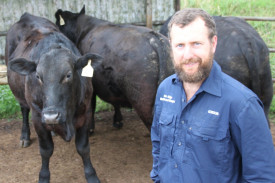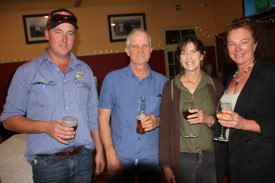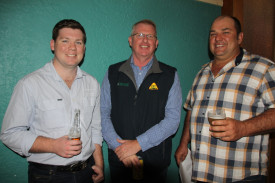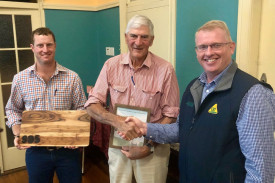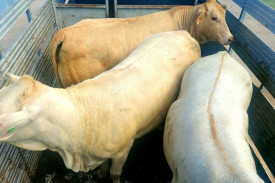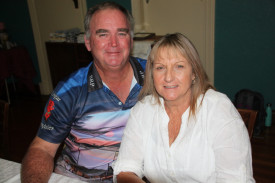On The Land
26 August, 2022
Surprise results in carcase competition
IN a surprise result, a pen of coastal-finished Charbray heifers has edged out a competitive fi eld to win the inaugural Far North Queensland MSA (Meat Standards Australia) Grass Fed carcase competition, the results of which were announced in Atherton last week.
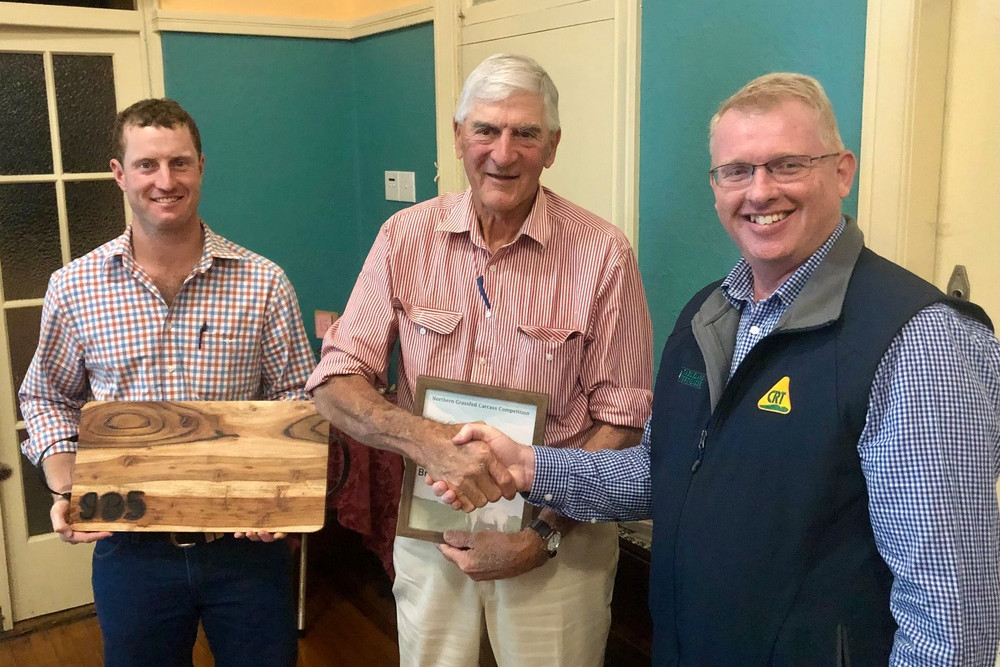
The winning pen, owned by Greg and Judy Brown of Tolga and their son and daughter-in-law, Alistair and Nellie Brown of “Karinya” Gumlu, were bought out of the Mareeba saleyards from three separate vendors situated at Wondecla, Mt Molloy and Atherton, to average 195kg at their on-property induction.
Post purchase, the heifers were de-pastured into a mixture of Redlands Leucaena, Rhodes grass, Bambatsi panic, Silk and Forage sorghums, stylos and native grasses, recording an average daily weight gain of 0.65kg/day, peaking at 1.39kg/day in the lead-up to the competition.
Data collected during the heifers' MSA grading process showed an average dressed weight of 321kg, an Eye Muscle Area (EMA) measurement of 79 sq cm, ossifi cation of 157, a marbling score of 340, 7mm of rib fat, 17mm of P8 (rump) fat, and a lean meat yield of 56.96 per cent to give them an MSA index score of 60.62, placing them in the top 10 per cent of Australian beef cattle.
The Browns bought the neglected 469-hectare Karinya, situated just 15m above sea level, two years ago and have since established 80 per cent of the place to irrigated pastures and leuceana and plan to develop the remaining 82 hectares in the near future.
They have started breeding their own Charbray calves on a lease block approximately 20 minutes west of Karinya and hope to have their current crop of weaners ready by March 2024 to compete in the next Beef Australia carcase competition.
“We bought some nice bulls from the annual National Charbray Bull Sale at Gracemere a couple of years ago as well as a good sire from Baronessa Farming near Atherton, and we will be looking for a couple of more bulls later this year,” Alistair Brown said.
“Pasture management is key in our operation. Pastures must be palatable, productive and perennial. No frost and our almost year-round growing season enables us to keep fresh feed in front of our cattle throughout the year.
“Important data from cattle sold to feed-on or live export markets is lost to producers and competitions like these are an ideal way of getting feedback on all aspects of your operation – your genetics, nutrition, livestock management and animal performance.
“We don't currently have an MSA grading facility in the north and it has long been considered by southerners that northern cattle don't stack up in the eating quality department.
“Results like these, show processors we can finish cattle up here and if pockets of opportunities begin to open up for us to have cattle graded into that system for a premium, while assuring consumers are getting a reliable, high quality product, that would be fantastic,” Mr Brown added.
Donna and Rob Rea of “Lisgar” Pastoral Company Gumlu, placed second with their pen of home bred and home-grown Droughtmaster heifers and in a close third was Gordon and Tabitha Carcary of “Acton Ridge Ultrablack and Brangus” stud near Millaa Millaa.
One of Gordon and Tabitha's Ultrablack 2 tooth steers was also successful in topping the individual animal carcase results, recording a dressed weight of 339.5kg, an EMA of 88 sq cm, an ossifi cation score of 120, marbling of 380, P8 fat of 10mm and a lean meat yield of 56.34 per cent to achieve and impressive MSA index score of 63.71. The Carcary family run their stud breeders on 81 hectares of very well fertilised, improved pastures featuring perennial, highly rainfall tolerant, pinto peanut and shaw creeping vigna legumes combined with the more common brachiaria and setaria grasses.
Interestingly, the competition's two top scoring pens were heifers and five out of six of the top performing pens were finished on the coast, challenging some of the traditional ideas the industry holds about the best class of animal to finish and the best country in which to finish them.
The 16 pens of competition entries, which were processed at JBS Townsville by 27 July, had to be pasture-fed animals with a dressed weight range of 260-340kg, presented as pens of three steers or three heifers. The brainchild of Bernie English and Greg Brown, the competition drew entries from seven high profile cattle producing families, from the Tablelands, south to Gumlu and west to Mt Garnet.
Breeds represented included Charbray, Droughtmaster, Ultrablack, Brangus and Brahman. MSA is a 24 year old, science-based red meat eating quality program driven by consumer preferences that measure eating quality factors that must be expertly assessed, such as the meat's ossifi cation (carcase maturity), HGP status, fat coverage, hump height, PH and acidity levels, marbling and meat colour.
JBS Townsville livestock buyer Andrew Carcary said they were happy to participate in this year's competition to give their clients a benchmarking snapshot of their cattle's performance, while at the same time JBS gets to see what northern producers are capable of.
“There are not enough cattle readily accessible to make it viable for us to off er MSA grading now, but I hope that these kinds of competitions will make more cattle available in the future,” he said.
“Hopefully more producers will enter next year's competition – the more the merrier.”
